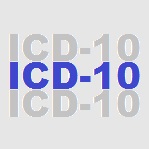How Providers can View Claim Status after ICD-10 Transition

- With hospitals, clinics, and health insurers moving fully into the ICD-10 transition over the last several weeks, it becomes imperative for providers and payers to determine whether their systems are working properly and reimbursement is on schedule. Healthcare providers in particular need to know whether their Medicare fee-for-service claims will be paid in a timely manner now that the ICD-10 transition deadline has passed.

Recently, the Centers for Medicare & Medicaid Services (CMS) sent a mailing explaining how the ICD-10 transition is affecting fee-for-service claims. Normally, it takes several days for a Medicare fee-for-service claim to be processed and an additional two weeks before payment can be issued.
However, there are several methods healthcare providers can take to check on the status of their Medicare fee-for-service claims. This includes using Interactive Voice Response or IVR.
IVR offers providers a way to access Medicare claims data and any updates through a toll-free telephone number. Healthcare providers are encouraged to speak with their Medicare Administrative Contractor (MAC) or visit their MAC website to learn more about IVR through a user guide.
If unable to use the IVR system, it is encouraged for physicians and other healthcare professionals to speak with a customer service representative through the Provider Contact Center. Once again, referring to the MAC website could be helpful. In fact, the MAC portal has key features that could provide some information about the status of a hospital’s Medicare fee-for-service claims.
Direct Data Entry screens are another means to submit claims electronically among providers who charge institutional claims. The MAC website also offers some key information about the ASC X12 Health Care Claim Status Request and Response (276/277).
The ASC X12 is a set of electronic transactions providers can access to ask for the status of their claims. The request is made via 276 and a response is provided through 277, CMS stated in their electronic mailing.
At this point in time, the healthcare industry from providers to payers and insurers are keeping a close eye on how the ICD-10 transition is affecting reimbursement in order to prevent an interruption to the revenue cycle, according to The Motley Fool publication.
As the number of new diagnosis codes has risen tremendously after the ICD-10 transition, fears abound about how the wrong code on a claim could lead to delayed payments or even outright denial of a claim. This could affect the payment structure among large hospital systems and medical facilities of all kinds.
“This a complex conversion that could initially lead to disruptions across the medical field,” says Aon Hewitt Senior Vice President Chris Miles. However, “Transferring to the new medical claim codes will allow key industry stakeholders to better track and manage diseases, measure the quality of care, and evaluate patient outcomes – all of which support the shift toward value-based payment plans.”
The large number of diagnosis codes available in ICD-10 is expected to lead to better quality care and improved diagnostic procedures. More descriptive codes that focus on the laterality of an injury or medical condition move beyond the ICD-9 coding system, which was first established in the 1970s.
While there is hope that healthcare professionals were sufficiently prepared for the ICD-10 transition, only time will tell whether there will be reimbursement issues amongst providers and payers.
“We are not dancing in the end zone yet,” Ross Lippincott, vice president of UnitedHealth's regulatory implementation office, told a panel at the Medical Group Management Association's annual meeting on October 12. “We are happy with where we are but still have a road to go.”
